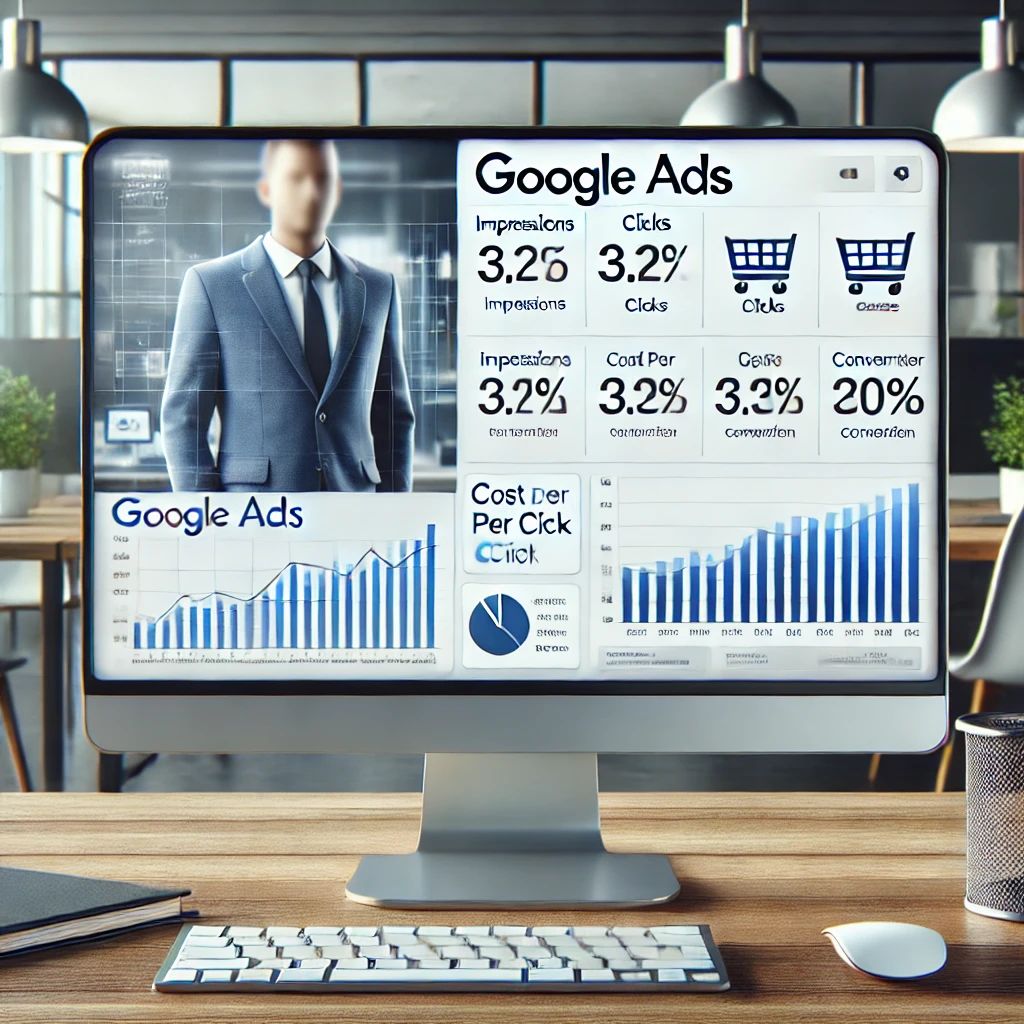How to Use Google Ads to Grow Your Small Business: A Step-by-Step Guide
Google advertisement (google ads)
Introduction
Google Ads is a powerful online advertising platform developed by Google, designed to help businesses reach their target audience through targeted and measurable campaigns. It allows advertisers to display their ads on Google’s search engine results pages, YouTube, and a network of partner websites. With Google Ads, businesses can bid on specific keywords, ensuring their message reaches potential customers actively searching for related products or services. Its pay-per-click (PPC) model means you only pay when someone clicks on your ad, making it a cost-effective solution for businesses of all sizes to drive traffic, generate leads, and boost sales.
Why Google Ads Is Essential for Small Businesses
If you’ve ever wondered how small businesses manage to appear at the top of search results, the answer is often Google Ads. Here’s why it’s such a powerful tool:
1. Immediate Visibility: Unlike organic SEO strategies, Google Ads places your business at the top of search results almost instantly.
2. Targeted Reach: You can target your audience based on location, age, interests, and even the specific terms they’re searching for.
3. Budget-Friendly: With Google Ads, you control how much you spend each day, ensuring you never exceed your budget.
4. High ROI: When done right, the return on investment (ROI) from Google Ads can be substantial.
Statistics back this up—businesses on average earn $2 in revenue for every $1 spent on Google Ads.

How Google Ads Works
Google Ads operates on a pay-per-click (PPC) model, meaning you only pay when someone clicks on your ad. Here’s a quick breakdown:
Keyword Auctions: You bid on keywords related to your business. For example, a bakery might bid on “fresh bread near me.”
Ad Rank: Google determines your ad placement based on your bid and your ad’s relevance (Quality Score).
Results: The higher your ad rank, the more likely your ad will appear at the top of the search results page.
Step-by-Step Guide to Using Google Ads for Small Business Growth
1. Set Up Your Google Ads Account
Go to Google Ads and sign up.
Link your account to your website and set up billing information.
2. Choose the Right Campaign Type
Google Ads offers several campaign types, but for small businesses, the most effective are:
Search Campaigns: Your ads appear on Google’s search results page.
Local Campaigns: Ideal for businesses that rely on foot traffic or local customers.
3. Conduct Keyword Research
Keywords are the backbone of any Google Ads campaign. Use tools like Google Keyword Planner to find keywords your potential customers are searching for.
Example Keywords for Small Businesses:
“Affordable catering services near me”
“Best yoga classes for beginners”
4. Create Compelling Ad Copy
Your ad copy needs to grab attention and drive action. Follow these tips:
Headline: Use attention-grabbing phrases like “Affordable” or “Limited Time Offer.”
Description: Highlight your unique selling point (e.g., “Freshly baked bread delivered daily!”).
5. Set a Budget and Bidding Strategy
Determine how much you’re willing to spend per day and per click. Start small and increase your budget as you see results.
6. Track and Optimize Your Campaign
Once your campaign is live, monitor these key metrics:
Click-Through Rate (CTR): Indicates how many people clicked on your ad.
Conversion Rate: Shows how many clicks turned into actions (sales, sign-ups, etc.).
Quality Score: Google’s rating of your ad’s relevance and quality.

Best Practices for Small Businesses
1. Local Targeting: Focus on your immediate area to attract nearby customers.
2. Use Ad Extensions: Add clickable links, phone numbers, or your business address to your ads.
3. A/B Test Ads: Experiment with different headlines, descriptions, and CTAs to see what works best.
Common Mistakes to Avoid
Targeting Too Broadly: Focus on specific, high-intent keywords rather than generic terms.
Ignoring Negative Keywords: Exclude irrelevant terms to prevent wasting ad spend. For example, if you sell luxury furniture, you might exclude “cheap furniture.”
Not Tracking ROI: Regularly analyze your ad spend versus revenue to ensure profitability.

Conclusion
Google Ads can transform your small business by helping you reach potential customers exactly when they’re searching for your products or services. By following this guide and implementing best practices, you’ll maximize your ROI and drive real growth for your business.
Ready to grow your small business? Start your first Google Ads campaign today and see the results for yourself!
